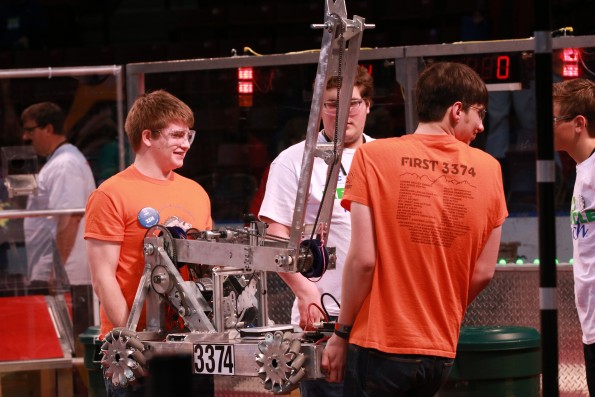
The game has been announced, the challenge given. Teams have six weeks, access to the same set of components and their imaginations to design and build a robot to compete in the 2016 Regional FIRST (For Inspiration and Recognition of Science and Technology) Robotics Competition to be held March 16-19 at the Maverik Center.
The game this year is Stronghold. Team robots compete in a medieval tower defender game that is played by two alliances of three teams each. Teams must defend their outer works while trying to score points by breaching the opponent’s outer works and capturing the opponent’s tower.
FRC, and the auxiliary programs for younger participants, were founded by inventor Dean Kamen. Kamen created both the Segway PT and the water purification system, Slingshot, which uses a “vapor compression distiller” to bring clean water to developing countries.
According to FIRST Utah Regional Director, Jared Berrett, PhD (Educational Psychology), “Kamen started FRC 25 years ago to make science and technology as revered and cool as sports and athletics.” One of Berrett’s primary goals, as a teacher was to find a way to make science “cool” for adolescent girls who start to drift away from STEM classes in junior high. He found FRC to be the perfect way to do that.
Currently a professor at Utah State University Eastern Division, Berrett got involved with FRC when he taught at San Juan High School. While at San Juan he started an engineering program with a 5 year NASA grant. He put together an FRC team there and was “blown away” by the student motivation. He has been involved ever since. The organization uses a vast pool of volunteers, and Berrett was hired part time, as he says “to be the key person to grow FIRST and to oversee any FIRST events that happen in the state.”

High school students in grades 9-12 compete with their robots head-to-head on a special playing field. Some schools, too few according to Berrett, sponsor teams and others are formed by students on their own. Middle- and high school students, grades 7-12, compete in FTCs FIRST Tech Challenge designing, building and programming robots for floor games. Students in grades 4-8 can compete in FIRST LEGO League, solving real-world engineering problems and competing with LEGO-based robots of their own design. Students in grades K-3 compete in FIRST LEGO League, Jr., exploring real-world scientific challenges working with motorized LEGO elements. The common denominator is innovative problem-solving. “The hardest fun you will ever have” is their motto.
There are 43 teams registered for the Utah Regional games, 23 from Utah and 20 more from out of state. The top three teams will go on to the world competition in St. Louis, Missouri, in April. According to Berrett, the components used in FRC are “off-the-shelf parts that Boeing would use. This is real stuff, not toys. In a 10-year study, 90 percent of all kids involved in FRC are in STEM occupations or studying STEM courses in college. It’s incredibly effective.”
The satisfaction of being number one isn’t the only reward. Twenty-five million dollars in scholarships is being awarded to help competitors further their dreams.

For more information or to volunteer visit www.firstinspires.org/
Story by Connie Lewis






